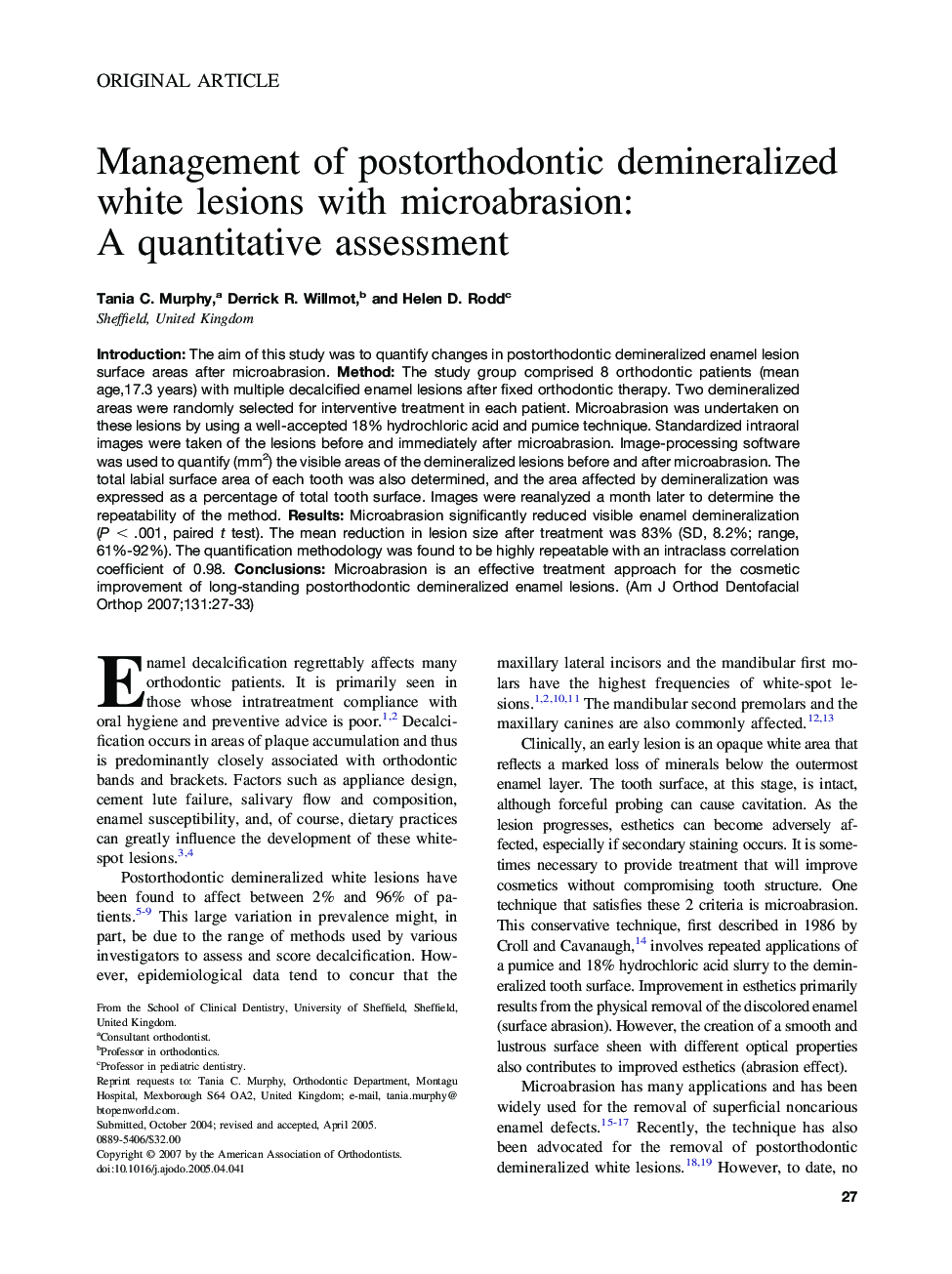| Article ID | Journal | Published Year | Pages | File Type |
|---|---|---|---|---|
| 3120460 | American Journal of Orthodontics and Dentofacial Orthopedics | 2007 | 7 Pages |
Introduction: The aim of this study was to quantify changes in postorthodontic demineralized enamel lesion surface areas after microabrasion. Method: The study group comprised 8 orthodontic patients (mean age,17.3 years) with multiple decalcified enamel lesions after fixed orthodontic therapy. Two demineralized areas were randomly selected for interventive treatment in each patient. Microabrasion was undertaken on these lesions by using a well-accepted 18% hydrochloric acid and pumice technique. Standardized intraoral images were taken of the lesions before and immediately after microabrasion. Image-processing software was used to quantify (mm2) the visible areas of the demineralized lesions before and after microabrasion. The total labial surface area of each tooth was also determined, and the area affected by demineralization was expressed as a percentage of total tooth surface. Images were reanalyzed a month later to determine the repeatability of the method. Results: Microabrasion significantly reduced visible enamel demineralization (P < .001, paired t test). The mean reduction in lesion size after treatment was 83% (SD, 8.2%; range, 61%-92%). The quantification methodology was found to be highly repeatable with an intraclass correlation coefficient of 0.98. Conclusions: Microabrasion is an effective treatment approach for the cosmetic improvement of long-standing postorthodontic demineralized enamel lesions.
